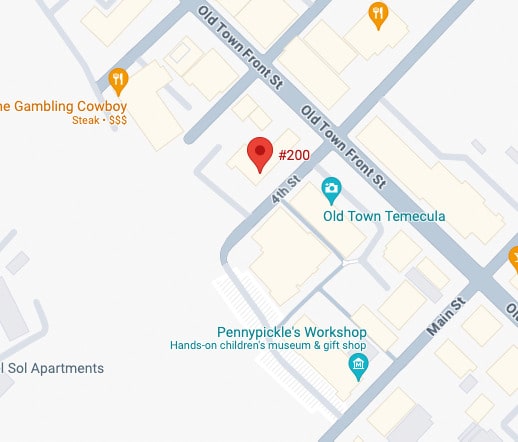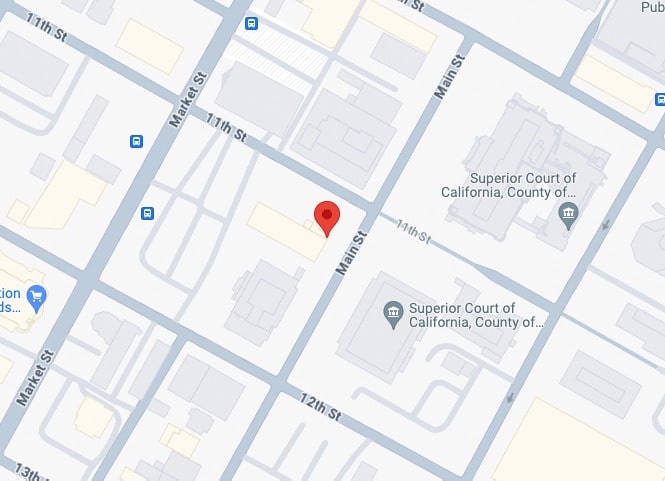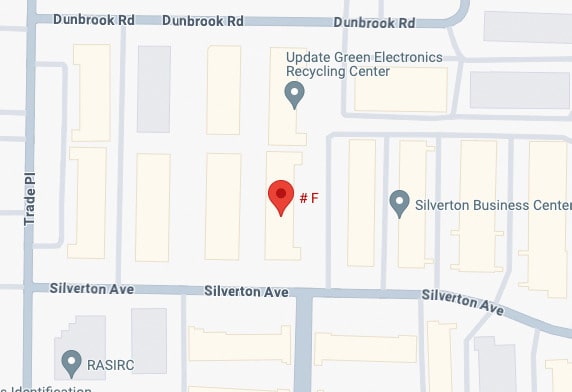California’s criminal court system is complex due to the rules and procedures set forth. All parties, namely the prosecution, police officers, the jury, the judge, and the defense, have binding rules they should adhere to. Each violation carries with it its own set of penalties.
The stakes are higher for a defendant. Making mistakes or violating the courts' rules and procedures could result in penalties or a conviction. However, with an attorney’s help, navigating the system becomes easy. Here is a look at the criminal justice system’s process.
-
The Arrest
Law enforcement officers make arrests. They do so with or without a warrant.
If law enforcement officers arrest with a warrant, it must be based on probable cause and describe the arrestee and the crime they are suspected of having committed. A law enforcement officer can apprehend you if they have a warrant for your arrest or probable cause to believe you committed a felony.
Should the officers arrest you without a warrant, the officers can only apprehend you if they have probable cause to believe you committed a crime in their presence. Additionally, an officer can arrest you if they have probable cause to believe that you committed a felony, even if you did not commit the crime in the officer's presence.
After the arrest, the officers will take you to a police station for booking. While there, expect the officers to take your fingerprints, photograph you, and possibly run a background check. After booking, you will be informed of the charges against you, and you will have the opportunity to make a phone call. You will then be held in custody or released on bail until your court date.
An arrest does not mean you are guilty of the crime you are accused of. You will have the opportunity to defend yourself in court and prove your innocence.
-
The Filling of a Criminal Complaint or Indictment
Prosecutors will file a criminal complaint to formally charge you with a criminal offense. The complaint outlines the specific charges against you, the defendant, for example, the statute or law you violated and the factual allegations supporting the allegations.
On the other hand, an indictment is a formal accusation that a person has committed a crime. A grand jury issues it. It is similar to a criminal complaint in that it outlines the specific charges against the defendant.
A criminal complaint and an indictment initiate a criminal case, and the accused person must appear in court to answer the charges. The main difference between the two is that a prosecutor issues a criminal complaint while a grand jury issues an indictment.
Courts address most criminal cases through a complaint, not an indictment. Therefore, most criminal proceedings start with a criminal complaint, with prosecutors using grand juries only in rare cases.
-
The Arraignment
The arraignment is the first court appearance in the criminal court process. During the arraignment, the judge informs you of the charges against you. He/she will also ask you to enter a guilty plea, not guilty, or no contest.
At the arraignment, the judge will also inform you of your constitutional rights, including the right to remain silent, the right to an attorney, and the right to a fair and speedy trial. The court will appoint one for you if you cannot afford an attorney. You could also be informed of your bail status, and the court could set your bail or release conditions.
The court will proceed to sentencing if you plead “guilty” or “no contest.” A guilty plea means that you admit to committing the crime, while a no-contest plea means that you do not contest the charges but do not admit guilt.
The court will schedule a pretrial hearing if you plead “not guilty.” The pretrial hearing allows the prosecution and defense to discuss the case and possibly negotiate a plea bargain. The case will proceed to trial if your attorney and the prosecutors fail to settle on plea bargain terms.
Note: Arraignment is a critical stage of the process, and defendants have the right to legal counsel during this stage and any stage of the trial process. Also, the courts must fully inform the defendant of their rights, the charges against them, and the possible consequences of their plea.
Being Released on Bond
After your arrest, the courts could release you on bail. Bail is a sum of money or a bond paid to the court to ensure that the defendant will return for their court appearances.
The court determines the bail amount based on a bail schedule. It lists standard bail amounts for different crimes based on the crime's severity and the defendant's criminal history. Each county has its bail schedule. The judge can also set the bail amount at his/her discretion, considering the defendant's financial situation, community ties, and whether he/she is a flight risk.
You will be released from custody until your next court appearance when you pay your bail. The courts return the bail money upon the conclusion of your case. However, the release is only possible if you appear in court when required. If you fail to appear in court, your bail will be forfeited, and a judge will issue a warrant for your arrest.
In some cases, the court could also release you on your own recognizance (O.R.). An O.R. release means you will be released without the need to post bail. An O.R. release is possible when the courts believe you are not a flight risk or a danger to the community.
It is worth noting that in recent years, California has implemented changes to its bail system to reduce the number of people held in custody before trial. Presently, defendants are assessed in the pretrial process using a risk assessment algorithm to determine if they pose a risk of not returning to court or a threat to public safety if released. Therefore, not everyone will have the option of being released on bail, and some defendants could remain in custody during the pendency of their case.
-
After the Arraignment
After the arraignment, the next step in the criminal court process can vary depending on whether the defendant pleads guilty, not guilty, or no contest and whether the case proceeds to trial.
The court will proceed to sentencing if you plead “guilty” or “no contest.” Sentencing includes a combination of fines, probation, and imprisonment. The judge will issue you a sentence appropriate for your convicted crime after considering aggravating or mitigating factors. This consideration helps the judge to determine the fitting punishment.
The case will proceed to a pretrial hearing if you plead not guilty. A pretrial hearing is a proceeding where the prosecution and defense can discuss and negotiate a plea bargain. A plea bargain is an agreement between the prosecution and defense, where the defendant agrees to plead guilty or no contest in exchange for a more lenient sentence or the dismissal of some charges.
The case will proceed to trial if a plea bargain is not reached. In the trial, the prosecution presents evidence to a jury seeking a conviction, while the defense presents it to the jury to prove the defendant’s innocence. The jury will deliberate and reach a verdict of guilty or not guilty. If the defendant is found guilty, the court will proceed to sentencing.
Above is a general overview of what can happen after the arraignment. The specific procedures vary depending on the circumstances of the case and the jurisdiction.
-
Setting the Trail Date
The trial date is typically set during a pretrial hearing after the defendant has entered a plea of not guilty. The purpose of the pretrial hearing is to schedule the trial and discuss any issues or motions that need resolving before the trial.
During the pretrial hearing, the judge will consider the time requirements of the case and the schedules of the parties involved and will set a trial date that is reasonably soon. The judge will also consider the complexity of the case and the amount of time needed for the parties to prepare for trial. Further, the judge considers factors, including the defendant's bail status and the availability of witnesses and evidence.
The trial date can be modified as necessary, for example, if the prosecution or defense needs more time to prepare for trial, if a critical witness becomes unavailable, or if the judge finds good cause to delay the trial.
-
The Trial
A trial or court case is a legal proceeding in which the prosecution and defense present evidence to a jury to prove their side of the case. The purpose of a court case is to determine whether the defendant is guilty or not guilty of the crime they have been charged with.
A criminal trial is generally a two-phase process:
- The trial proper and
- The penalty phase.
In the trial proper, the prosecution and the defense will present evidence to the jury. The prosecution, representing the state, will present evidence to prove that the defendant is guilty of the crime the state has charged them with. On the other hand, the defense will present evidence to prove the defendant's innocence. Both sides can call witnesses, present documents, and argue their cases before the jury.
After both sides have presented their evidence, the jury will deliberate and reach a verdict of guilty or not guilty. If the jury finds the defendant guilty, the case will proceed to the penalty phase, where the judge will determine the appropriate sentence for the defendant.
If the jury finds the defendant not guilty, the defendant will be acquitted and released from custody, although the prosecution can still file appeals in some instances.
Note: In a trial, the defendant has the right to be represented by an attorney and the right to a fair and impartial trial. This right is enshrined in the Sixth Amendment. The burden of proof rests with the prosecutors, who must prove the defendant's guilt beyond a reasonable doubt. The defendant is presumed innocent until proven guilty.
-
The Verdict
The verdict is the decision reached by a jury in a criminal trial. They consider the evidence presented by both the prosecution and the defense. The verdict is either guilty or not guilty, indicating whether the prosecution has proven beyond a reasonable doubt that the defendant committed the crime for which they have been charged.
After the jury has heard all the evidence and has been instructed on the law by the judge, they retire to a separate room to deliberate. During deliberation, the jury members discuss the case, consider the evidence and testimony, and decide on a verdict.
The jury must reach a unanimous verdict, meaning that all the jurors must agree on the verdict. If the jury cannot reach a unanimous verdict, it is considered a hung jury, and a judge could declare a mistrial. In that case, the prosecution has the option of retrying the case.
Once the jury has reached a verdict, the foreperson will announce the verdict in open court in the presence of the judge, the defendant, and the attorneys. If the verdict is guilty, the judge will schedule a sentencing hearing, during which the defendant will be sentenced for the crime. The defendant will be acquitted and released from custody if the verdict is not guilty.
A defendant has the right to appeal a guilty verdict to a higher court. It is a separate process that could have different outcomes and is not guaranteed to reverse the initial judgment.
Bail is returned to the person who posted it after a verdict has been reached and the defendant has either been sentenced or released from custody. If the defendant is convicted and sentenced to serve time in prison, the bail could be applied towards any fines or fees imposed as part of the sentence. The courts will return the bail in full if the defendant is found not guilty.
Note: Depending on the specific court, there could be a process for claiming the return of bail, and it takes some time for the money to be returned. Also, if there are any pending charges, the bail could be transferred to the next court.
-
Sentencing hearing
A sentencing hearing is a court proceeding after a defendant has been found guilty or has entered a plea of guilty or no contest in a criminal case. The purpose of the sentencing hearing is for the judge to determine the appropriate punishment for the crime the defendant is convicted of.
The sentencing hearing typically takes place within a few weeks of a guilty verdict or plea. At the hearing, the judge considers various factors, like the defendant's criminal history, the severity of the crime, and any mitigating or aggravating circumstances. The prosecution and defense could also present evidence and argue for a specific sentence.
The judge has discretion on what type of sentence to impose. The sentence could range from probation, community service, or fines to a term of imprisonment, depending on the nature and gravity of the crime committed.
In California, some crimes have mandatory minimum sentences. That means the judge must impose a specific minimum sentence and cannot go below that.
-
The Appeal Process
The criminal court appeals process begins after a trial, and the jury renders a verdict. The appeals process allows a defendant to challenge a conviction or sentence in a higher court.
The defendant has the right to appeal a conviction to the California Court of Appeal within 60 days of the judgment. The defendant must file a notice of appeal with the trial court and pay a fee to the appellate court. After that, the appellate court will review the record of the trial and the briefs submitted by the parties. It does so to determine if any errors were made during the trial that would justify reversing the conviction or modifying the sentence.
The defendant also has the right to petition the California Supreme Court to review the case, but this is not guaranteed. The court typically only reviews cases that raise significant legal issues or conflict with previous decisions.
In the appeals process, the standard of review is different than in the trial court. Further, the burden of proof is on the appellant, the party that brings the appeal. He/she must prove that there were errors in the trial court.
Find a Reliable Bail Bondsman Near Me
Bail bond dealers are licensed professionals who can help secure the release of someone arrested and detained for a crime. You or a loved one can contact a bail bond company. The bondsman will provide information about the bail bond process, including the cost and the necessary paperwork. If you have been arrested, please contact us if you are seeking a bail bond. Call Justice Bail Bonds at 951-445-4155 and let our Temecula team help you secure your release from prison. Our team is ready to offer you assistance.










